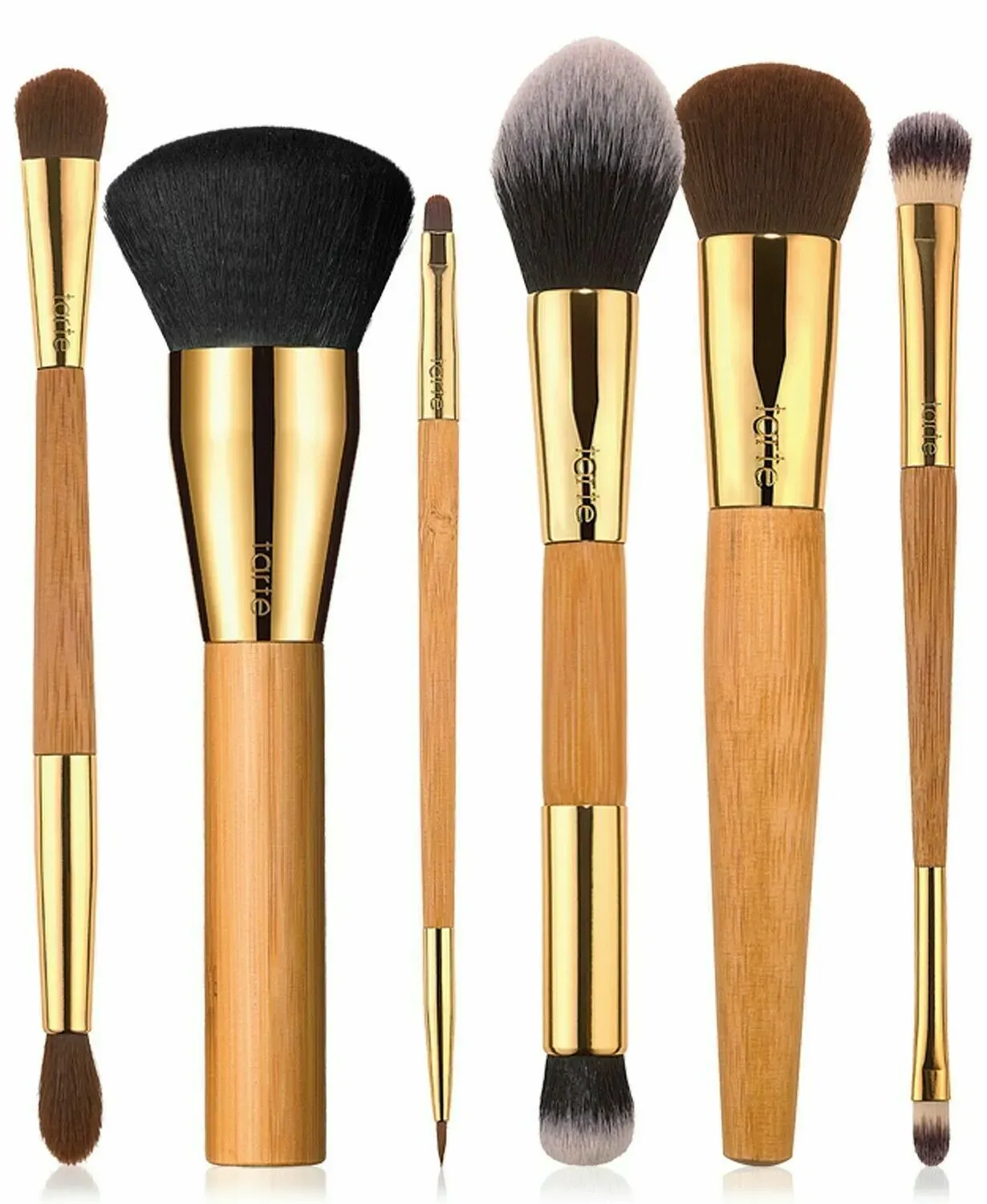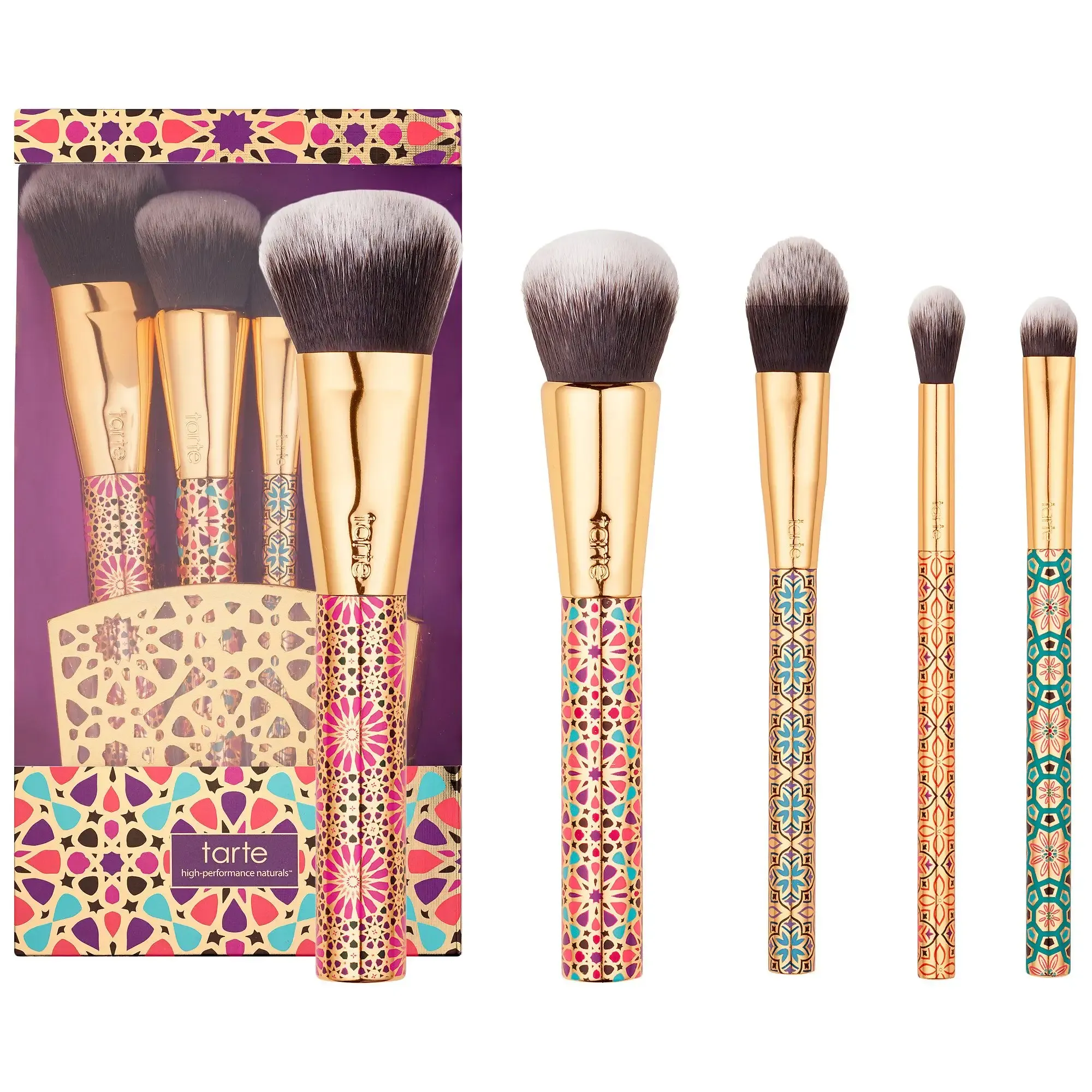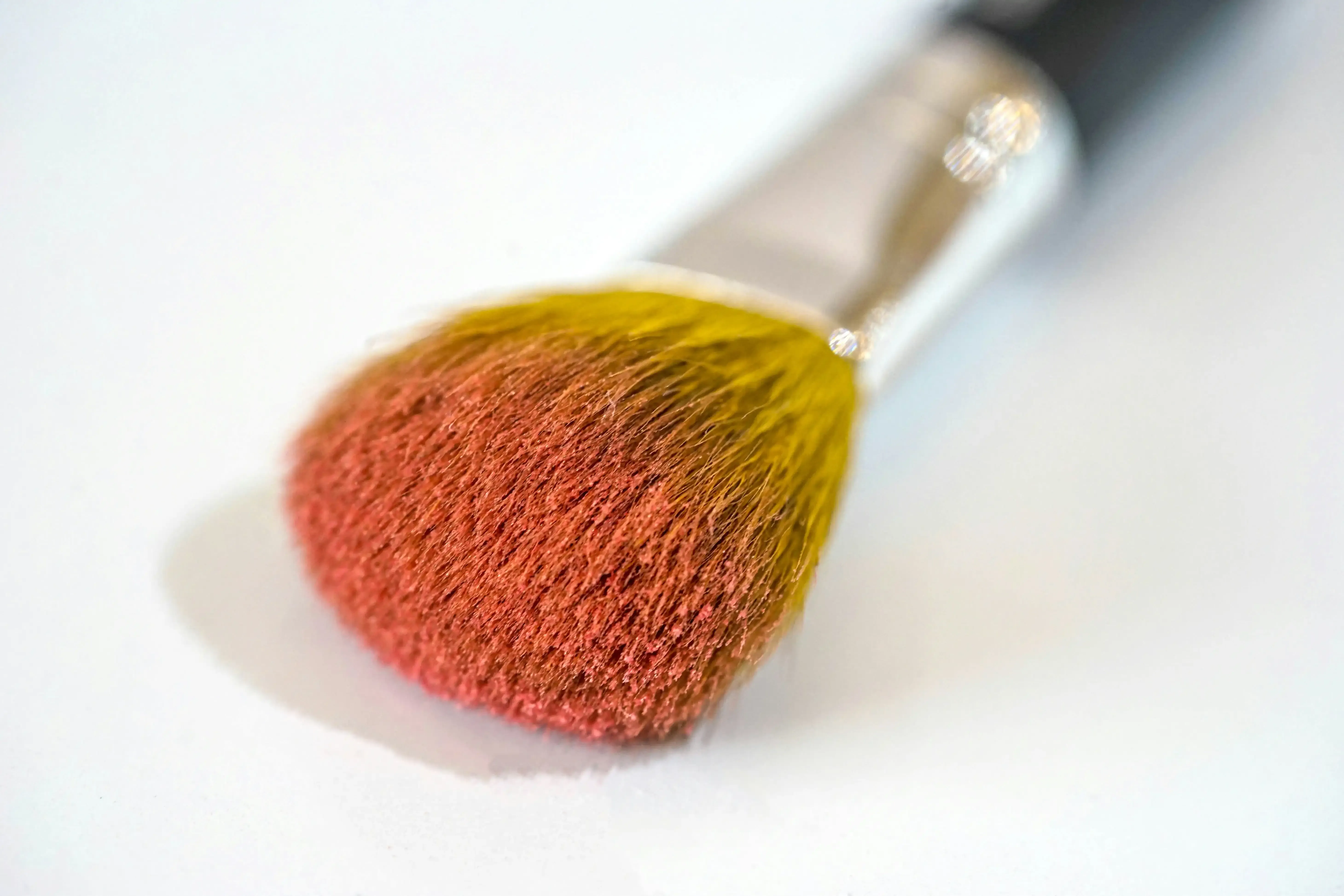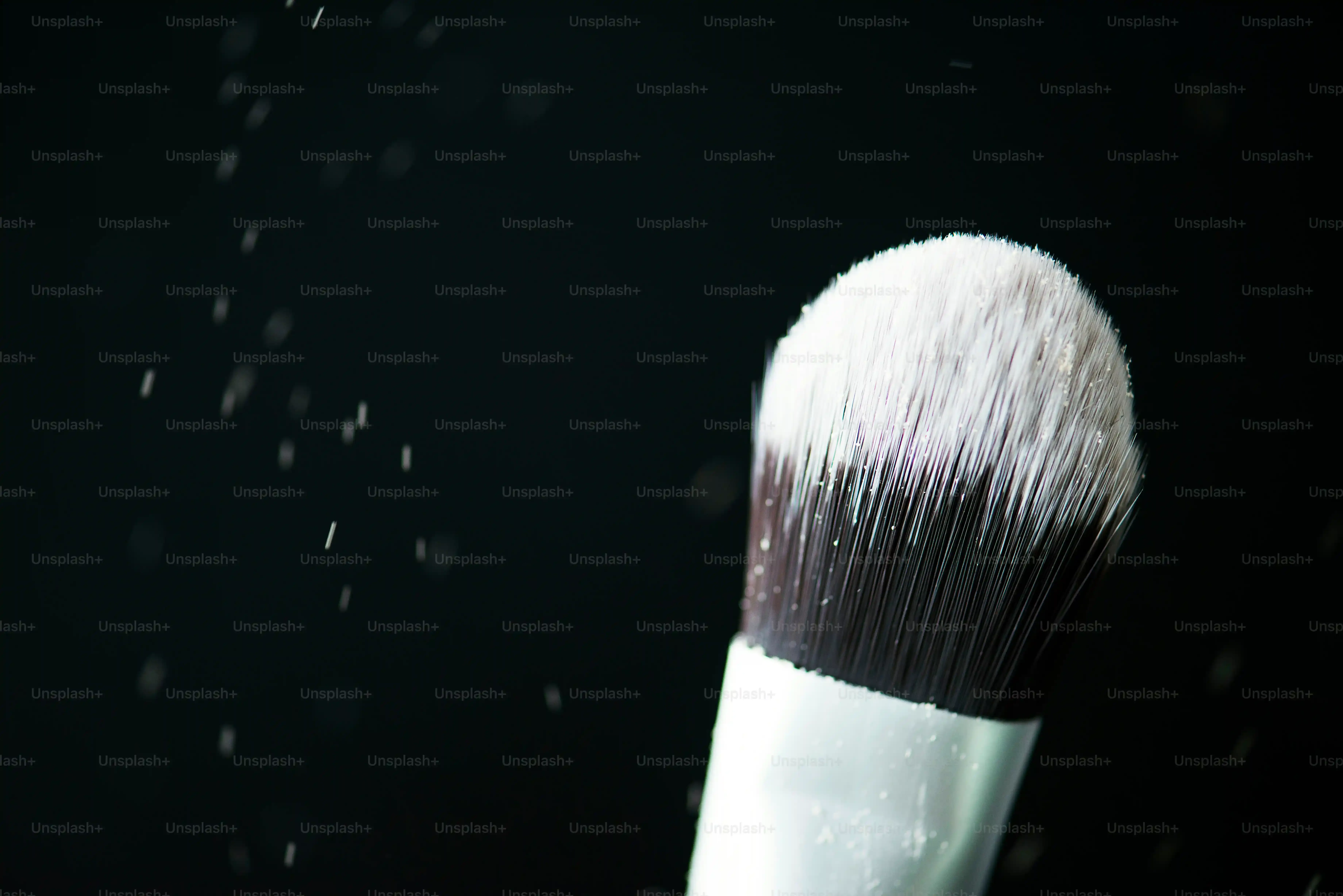Table of Contents
Let's be real. Standing in front of a wall of makeup brushes can feel like navigating a minefield. So many shapes, so many sizes, and prices that make you question if they're woven from actual gold. Tarte is a brand that pops up everywhere, known for its "high-performance naturals" and, yes, its rather extensive collection of brushes. You’ve seen the ads, maybe even held one in your hand, wondering if this particular tarte makeup brush is the secret weapon your routine is missing or just another piece of plastic destined for a drawer. Does spending that kind of cash actually make a difference in how your foundation lays or your eyeshadow blends? Or are you just paying for the purple handle? This article cuts through the marketing fluff. We’ll break down the different types of tarte makeup brush options available, talk about what they're actually good for, tackle the not-so-glamorous but essential task of keeping them clean, and ultimately, help you decide if adding a tarte makeup brush (or two, or three) to your kit is a smart move or just an expensive habit. Stick around; we’ll figure out which ones deliver and which might leave your wallet feeling lighter without improving your blend game.
Sorting Through the Brush Bin: Are Tarte Brushes Right for You?
Sorting Through the Brush Bin: Are Tarte Brushes Right for You?
Navigating the Tarte Brush Landscape
so you’re standing there, staring at a display (virtual or physical) packed with brushes sporting that signature purple handle or maybe some fancy limited-edition design. Every single tarte makeup brush promises flawless application, streak-free foundation, or eyeshadow blends so seamless they look photoshopped. But let's cut the marketing speak. Tarte built its name on "high-performance naturals," and they extend that philosophy to their tools. They emphasize vegan bristles and cruelty-free practices, which matters to a lot of people. The question isn't just "Is this a good brush?" It's "Is this specific tarte makeup brush going to do what I need it to do better than something cheaper, or even something more expensive?" It requires a bit more thought than just grabbing the prettiest one.
Beyond the Purple Handle: What to Consider
Before you commit to a tarte makeup brush, think about what you're trying to achieve. Are you struggling with patchy foundation? Does your blush always look like clown circles? Or are you trying to master a smoky eye that doesn't look like you got punched? Tarte offers brushes for just about every step of a makeup routine – foundation, concealer, powder, blush, bronzer, highlighter, countless eye brushes, lip brushes. Each one is designed for a specific task, or at least marketed that way. The sheer variety can be overwhelming, making it tough to know where to start or whether you even need *another* brush. It's easy to fall into the trap of buying a brush because it looks nice or a favorite influencer used it once.
Ask yourself these questions:
- What specific makeup product am I having trouble applying?
- Which brush in my current collection isn't doing the job?
- What is my budget for a new brush?
- Do the brand's values (vegan, cruelty-free) align with mine?
Decoding the Lineup: Essential Tarte Makeup Brush Types and Uses
Decoding the Lineup: Essential Tarte Makeup Brush Types and Uses
Getting Your Base Right: Foundation and Concealer Brushes
so you've decided you need a tarte makeup brush to get your base looking less like a patchy mess and more like actual skin. Tarte has a whole army of brushes dedicated to foundation and concealer. You'll see dense, flat-top kabukis, angled brushes, and smaller, more precise ones for under the eyes. The key here is density and shape. A dense brush, like their popular Airbuki or Bamboo Foundation Brush, is great for buffing liquid or cream foundation into the skin for a smooth, airbrushed finish. It pushes the product in rather than just moving it around. For concealer, you want something smaller and often tapered, like their Creaseless Concealer Brush, which fits into the contours around your eyes and nose without dragging the delicate skin. Picking the right one depends on the formula you're using and the finish you want. Don't expect a fluffy powder brush to blend your liquid foundation seamlessly; it just won't happen.
Fluff and Blend: Powder, Blush, and Bronzer Brushes
Moving on to the finishing touches, tarte offers a range of fluffier brushes for powder, blush, bronzer, and highlighter. These are usually less dense than foundation brushes, designed to lightly deposit product and blend it out softly. Think big, dome-shaped brushes for setting powder, angled brushes that hug the cheekbone for bronzer or contour, and slightly smaller, tapered brushes for a pop of blush. A good powder brush, like their Fan Brush or the Powder Brush from their sets, should distribute powder evenly without looking cakey. For blush, an angled or slightly tapered brush gives you more control over placement. Bronzer brushes are often larger to allow for sweeping motions across the face and body. It's about finding the right size and shape to fit the area you're working on and achieve a diffused, natural look, not a harsh stripe. Here are a few common tarte makeup brush types for the face and what they generally do:
- Foundation Brush (Dense, Flat/Dome): Buffs liquid/cream foundation for an airbrushed finish.
- Concealer Brush (Small, Tapered): Applies and blends concealer precisely in smaller areas.
- Powder Brush (Large, Fluffy): Sets makeup with loose or pressed powder, provides light coverage.
- Blush Brush (Medium, Tapered/Angled): Applies blush to the apples of the cheeks or along the cheekbone.
- Bronzer/Contour Brush (Larger, Angled/Dome): Applies bronzer or contour to larger areas for definition or warmth.
- Highlighter Brush (Small, Tapered/Fan): Applies highlighter to specific points like cheekbones or brow bone.
Eyes Have It: Eyeshadow and Liner Brushes
The eye brush selection from Tarte is where things get really specific, and frankly, a bit overwhelming. You'll find brushes for packing color onto the lid, brushes for blending eyeshadow seamlessly into the crease, tiny pencil brushes for smudging liner or shadow along the lash line, and angled brushes for applying gel or powder liner. A good blending brush, often fluffy and tapered, is non-negotiable if you want your eyeshadow to look smooth and professional. Brushes for packing color are usually flatter and denser, designed to pick up pigment and deposit it intensely onto the lid. Liner brushes are typically very fine and precise, allowing for sharp lines. Mastering eye makeup often comes down to having the right brush for the specific task and knowing how to use it. A tarte makeup brush designed for blending will perform poorly if you try to use it to draw a sharp winged liner, and vice versa. Each shape serves a purpose, intended to make a particular step easier or the result better.
Keeping Your Tarte Makeup Brushes Clean (Without Ruining Them)
Keeping Your Tarte Makeup Brushes Clean (Without Ruining Them)
Why Your Brushes Need a Bath (Like, Yesterday)
Alright, you've invested in a fancy tarte makeup brush, maybe the one for bronzer that makes you look less like a ghost and more like you've seen the sun recently. But that magic tool is collecting more than just bronzer. It's picking up skin oils, dead skin cells, leftover foundation, powder fallout, and a delightful cocktail of bacteria. Using dirty brushes isn't just gross; it actively works against your makeup application. That expensive foundation brush? It's now dragging old product and oil around, creating streaks and potentially causing breakouts. Those fluffy eyeshadow brushes? They're muddying your colors and making blending a nightmare. Cleaning your tarte makeup brush isn't an optional chore; it's essential maintenance if you want them to perform as intended and last longer than a few months. Ignoring it is like driving your car without ever changing the oil – eventually, things are going to grind to a halt.
The How-To: Giving Your Tarte Brushes a Proper Wash
So, how do you actually clean these things without ruining the bristles or dissolving the handle? It’s not rocket science, but there are a few pointers. First, you need a cleaning agent. This can be a dedicated brush cleanser, gentle soap (like baby shampoo), or even dish soap for synthetic brushes used with cream or liquid products (use sparingly!). Wet the bristles pointing downwards under lukewarm running water – never hot, as that can loosen the glue in the ferrule (the metal part connecting the bristles to the handle). Swirl the brush gently against your palm or a textured cleaning mat with a bit of your cleanser. You'll see all sorts of gunk come out. Rinse thoroughly until the water runs clear. Squeeze out excess water gently and reshape the bristles. Lay your tarte makeup brush flat on a towel or use a brush drying rack, ensuring the bristles are angled downwards so water doesn't seep into the ferrule. Let them air dry completely, which can take several hours or even overnight. Don't stand them upright while wet; that's a one-way ticket to a wobbly handle.
Here’s a quick breakdown of the process:
- Wet: Run bristles under lukewarm water, pointing downwards.
- Lather: Swirl brush on palm or mat with cleanser.
- Rinse: Continue rinsing until water runs clear.
- Shape: Gently squeeze excess water and reshape bristles.
- Dry: Lay flat or hang bristles-down until completely dry.
The Bottom Line: Investing in Tarte Makeup Brushes
The Bottom Line: Investing in Tarte Makeup Brushes
So, Are Tarte Makeup Brushes Worth Your Hard-Earned Cash?
After sorting through the sizes, shapes, and intended uses of a tarte makeup brush, the big question looms: should you actually buy them? Tarte positions itself as a mid-to-high range brand, and their brushes reflect that price point. They're definitely more expensive than drugstore options but often less than luxury brands. What you're paying for, in theory, is the quality of the bristles (often synthetic and designed to mimic natural hair), the construction (do the handles feel sturdy? Does the ferrule wobble?), and the brand's reputation, including their vegan and cruelty-free stance. For some, the ethical aspect alone justifies the cost. For others, it's purely about performance. Do they outperform every single cheaper alternative? Probably not. Can they be excellent tools that elevate your makeup game? Absolutely, but you need to choose wisely.
It's easy to get swept up in the idea that a higher price automatically means a better result. Sometimes, a well-designed, affordable brush can do the job just as well, if not better, than an expensive one that's just okay. The value lies in finding the brush that works for *you* and the products you use most often. Think of it like kitchen knives; you don't need a dozen fancy blades, but a few sharp, reliable ones make cooking much easier. A good tarte makeup brush for foundation or blending eyeshadow, if it fits your technique and product preference, can genuinely make a difference in how your makeup looks and how quickly you can apply it. What makes a brush "worth it"?
- It performs its intended task effectively (blends seamlessly, applies evenly).
- It saves you time or frustration compared to other tools.
- It feels comfortable and well-balanced in your hand.
- It holds up to regular cleaning without falling apart.
- Its ethical considerations (like being vegan/cruelty-free) align with your values.
Where Tarte Brushes Might Shine (and Where They Might Not)
Based on user feedback and general consensus, certain tarte makeup brush types tend to get more praise than others. Their denser face brushes, particularly those designed for buffing in liquid or cream products, often receive positive reviews for creating a smooth finish. Many find their blending brushes for eyeshadow effective as well. However, the sheer volume of brushes means there are also some duds or ones that are just... fine. You're paying a premium, so "fine" isn't really good enough. It's worth researching specific brush reviews rather than buying a whole set blindly. Sometimes, the unique shape of a tarte makeup brush is genuinely innovative and helpful, while other times it feels like a gimmick.
Making the Investment Decision
Ultimately, deciding whether to invest in a tarte makeup brush comes down to your personal needs, budget, and priorities. If you're struggling with a specific step in your routine and a particular tarte brush is highly recommended for that task and fits your budget, it might be a worthwhile purchase. If you value vegan and cruelty-free tools and are willing to pay a bit more for them, Tarte is a strong contender. However, don't feel pressured to replace your entire brush collection with Tarte just because of the name. Identify your makeup pain points, see if a specific tarte makeup brush is known for solving that problem, and consider if the cost aligns with the potential benefit. Sometimes, the best brush is the one you already own that works, or a cheaper alternative that performs just as well. It's about smart additions, not just collecting purple handles.
Making the Call on Tarte Brushes
So, after wading through the options, figuring out what each oddly shaped tool is supposed to do, and contemplating the chore of washing them, where do we land on the tarte makeup brush question? It’s clear not every brush with a purple handle is a miracle worker, and some perform tasks others do just as well for less cash. The real value lies in identifying the specific brushes that address a gap in your current collection or genuinely outperform cheaper alternatives for a technique you use often. Buying a whole set might be overkill, but a targeted purchase of a standout foundation or blending brush might actually elevate your routine. Ultimately, deciding if a tarte brush is "worth it" comes down to whether its performance justifies its price tag for *your* needs, not just the brand name. Choose wisely, clean them often, and your face (and wallet) will thank you.
